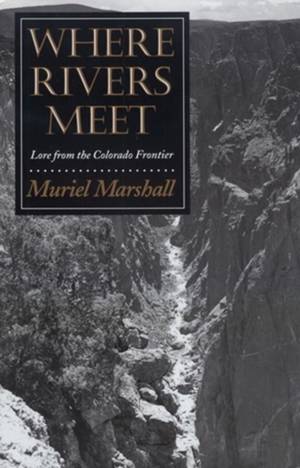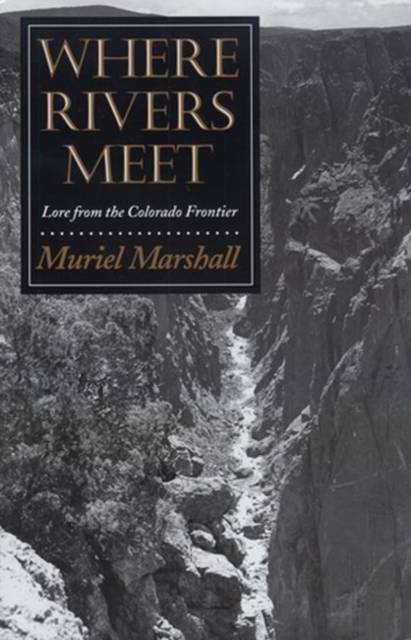
- Afhalen na 1 uur in een winkel met voorraad
- Gratis thuislevering in België vanaf € 30
- Ruim aanbod met 7 miljoen producten
- Afhalen na 1 uur in een winkel met voorraad
- Gratis thuislevering in België vanaf € 30
- Ruim aanbod met 7 miljoen producten
Zoeken
Omschrijving
Where the Gunnison and Uncompahgre Rivers meet, so too have the real life stories and myths of the Native Americans, Spanish gold-seekers, French fur traders, white settlers, infamous outlaws, and the many others who have attempted to lay their claim to the region. In Where Rivers Meet, Muriel Marshall returns to western Colorado, the stomping grounds for her previous book, Red Hole in Time, to unearth the rich local lore. More than rural in its appeal, this story of life at the confluence of the tumultuous Gunnison and the tranquil Uncompahgre Rivers is a meditation on the history and irresistible appeal of the American West. Here, ancient stone circles hold the mysteries of human prehistory overlooking the two rivers. Utes, who once eked out a pitiable existence from the inhospitable land but came to dominate the region as great horsemen and warriors, prized the confluence as sacred intertribal meeting grounds. At the rivers, the paths of would-be Spanish conquerors inexplicably came to a halt--then reversed. Uncle Dick Wootton's Old West legend as trapper and Indian wrestler extraordinaire grew. And literally before the dust of vacating Utes had settled, squatters rushed into the river valley, drawn by the promise of virgin lands and the challenge of taming two rivers for farming and industry. Great floods and other hardships would remind them of the limits to pioneer ambition. In her casual style, refreshing for its wit and sharp insight, Muriel Marshall tells the story of human struggle and folly in a region that beguiles visitors with its beauty and defies the order imposed by an encroaching civilization--the essential conflict in the American West that in many ways continues today. Her story drops the names of the many who came to make their mark in the confluence--in fact and in legend--and the many who passed through, leaving a lasting impression on the region before riding off into American myth. Marshall successfully channels into narrative the powerful storytelling current that underlies old newspaper reportage, pioneer memoir, and personal interview. The result is an inviting and invigorating dip into a tale of a people and a place.
Specificaties
Betrokkenen
- Auteur(s):
- Uitgeverij:
Inhoud
- Aantal bladzijden:
- 232
- Taal:
- Engels
- Reeks:
- Reeksnummer:
- nr. 14
Eigenschappen
- Productcode (EAN):
- 9780890966860
- Verschijningsdatum:
- 1/02/1996
- Uitvoering:
- Hardcover
- Formaat:
- Genaaid
- Afmetingen:
- 158 mm x 235 mm
- Gewicht:
- 562 g

Alleen bij Standaard Boekhandel
+ 100 punten op je klantenkaart van Standaard Boekhandel
Beoordelingen
We publiceren alleen reviews die voldoen aan de voorwaarden voor reviews. Bekijk onze voorwaarden voor reviews.











